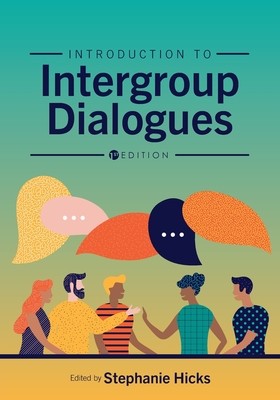
- We will send in 10–14 business days.
- Publisher: Cognella Academic Publishing
- ISBN-10: 1516548574
- ISBN-13: 9781516548576
- Format: 17.8 x 25.4 x 1.6 cm, softcover
- Language: English
- SAVE -10% with code: EXTRA
Introduction to Intergroup Dialogues (e-book) (used book) | bookbook.eu
Reviews
Description
Introduction to Intergroup Dialogues provides students and facilitators with an exemplary resource for learning about and conducting intergroup dialogues. The anthology weaves classic texts within the discipline with illuminating reflection and comprehension questions. The readings are designed to support student learning of social justice education concepts, as well as intergroup dialogue skills and techniques, as they move through the dialogue experiences.
The book is divided into four units, which reflect the stages of intergroup dialogue: forming and building relationships; exploring group differences and commonalities; exploring hot topics; and building alliances and planning for action.
In Unit I, readings outline the origins, learning outcomes, and structure of intergroup dialogue, and introduce students to a key pedagogical technique-affirming inquiry. Unit II contains readings on social identity, group membership, socialization, oppression, and their manifestations. Unit III provides resources to support students' navigation through pressing social issues that can illuminate how we think and communicate about difference at the individual, institutional, and structural levels. In Unit IV, students read about allyship, coalition building, accountability, and self- and community care. Finally, they are encouraged to consider how to apply what they've learned in dialogue outside the classroom.
EXTRA 10 % discount with code: EXTRA
The promotion ends in 17d.13:07:35
The discount code is valid when purchasing from 10 €. Discounts do not stack.
- Publisher: Cognella Academic Publishing
- ISBN-10: 1516548574
- ISBN-13: 9781516548576
- Format: 17.8 x 25.4 x 1.6 cm, softcover
- Language: English English
Introduction to Intergroup Dialogues provides students and facilitators with an exemplary resource for learning about and conducting intergroup dialogues. The anthology weaves classic texts within the discipline with illuminating reflection and comprehension questions. The readings are designed to support student learning of social justice education concepts, as well as intergroup dialogue skills and techniques, as they move through the dialogue experiences.
The book is divided into four units, which reflect the stages of intergroup dialogue: forming and building relationships; exploring group differences and commonalities; exploring hot topics; and building alliances and planning for action.
In Unit I, readings outline the origins, learning outcomes, and structure of intergroup dialogue, and introduce students to a key pedagogical technique-affirming inquiry. Unit II contains readings on social identity, group membership, socialization, oppression, and their manifestations. Unit III provides resources to support students' navigation through pressing social issues that can illuminate how we think and communicate about difference at the individual, institutional, and structural levels. In Unit IV, students read about allyship, coalition building, accountability, and self- and community care. Finally, they are encouraged to consider how to apply what they've learned in dialogue outside the classroom.


Reviews